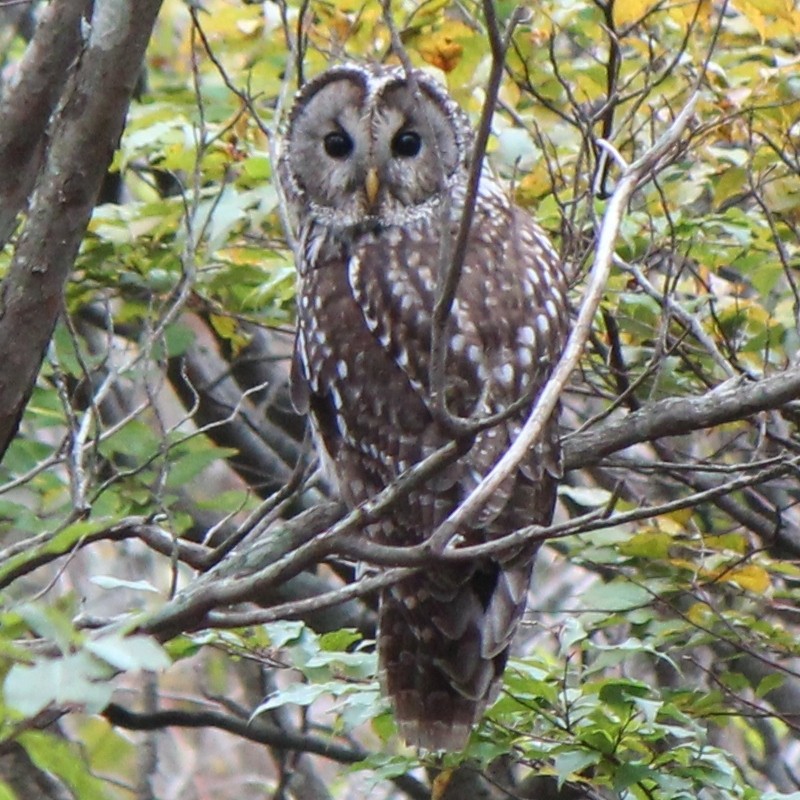 Where do ural Owl live?
Where do ural Owl live?
Where do ural Owl live?
Ural owls tend to occur in mature but not too dense primary forest, which can variously be in coniferous, mixed or deciduous areas. Normally, they prefer to be close to an opening. These are often compromised by forest bogs with wet ground underfoot is overgrown by a mixture of spruce, alder and/or birch or by damp heathland with scattered trees. Predominant trees in much of the range are often spruce, fir and pine forests in north and alder, beech and birch with mixtures of the above conifers in the south. Quite often they are adapted to high elevation forest in mountains, but in remote wildlands they can adapt equally well to areas down to sea level. In the Carpathian mountains, they tend to favor almost exclusively beech-dominated forests, normally at elevations of 250 to 450 m (820 to 1,480 ft) above sea level. Forest characteristics of these beech-dominated woods showed that during forest management showed they need at least 100 ha (250 acres) of woods to persist, with parts of the forests needing to be at least 45-60 years old. Carpathian Ural owls typically occur far from human habitations and woodland edge not surrounded by forest and typically avoid parts of the forest with steep slopes or with dense undergrowth. Carpathian birds often preferred areas with glades that bear gaps between the trees often around 25 m (82 ft) or so and usually with plentiful broken trees. Young, post-dispersal owls in the Carpathians birds show less strong habitat preferences and may utilized wooded corridors that often are connected to remaining ideal habitat areas. Reportedly the countries of Slovakia, Slovenia then Romania have the most extensive ideal habitat in the Carpathians and resultingly have the highest local densities of Ural owls, perhaps in all of Europe. Forest predominant in beech were also seemingly preferred by the reintroduced Ural owls in Bavarian Forest, again with old growth preferred with plentiful sun exposure. Bavarian owls occurred in areas that were also often rich in large mammals since their preference for access to parts of the forest with broken trees and openings often coincided. Further north in Latvia, forests inhabited were usually far older than was prevalent in the regional environment, usually with a preference for forest areas with trees at least 80 years old. Finnish populations apparently most often occur in spruce dominated forest, usually having discreetly segregated forest preferences apart from sympatric species of owls except for the boreal owl, which also preferred spruce areas but occurred more regularly when the dominant Ural owls are scarce. In the taiga of western Finland, it was found that biodiversity was consistently higher in the vicinity of Ural owl nests than outside these vicinities, rendering the Ural owl as perhaps a “keystone species” for the local ecosystem. Riverine forests with birch and poplar are often utilized in the taiga as well as spruce or fir forests (montane taiga) in the Ussuri river area. Generally in northern climes such as Finland and western Russia, wherein the Lapland area the Ural owl is likely to reach the northernmost part of its range, it is adaptive to Subarctic areas possibly up to the tree line but does not adapt as well as the great grey owl to areas of dwarf forest just south of the tundra, generally needing taller, more mature forests to the south of this. Historically, they normally occur in remote, little disturbed areas far from human habitations. The Ural owl is largely restricted from areas where forest fragmentation has occurred or park-like settings are predominant, as opposed to the smaller, more adaptive tawny owl which acclimates favorably to such areas. On the contrary, in some peri-urbanized areas of Russia, such as the metropolitan parks and gardens so long as habitat is favorable and encouraging of prey populations, the Ural owl has been known to successfully occur. Some towns and cities whose region hold some populations of Ural owls are Chkalov, Kirov, Barnaul, Krasnoyarsk and Irkutsk, and even sometimes Leningrad and Moscow. Changes in nesting habits due to the erection of nest boxes has almost allowed Ural owls to nest unusually close to human habitations in the western part of the range, especially in Finland. An exceptional record of synanthropization in this species for Europe was recorded in Košice, Slovakia where a 10-15 year apparent increase of an unknown number of owls have been observed between the months of November and June. At least one Ural owl was recorded to habituate the city of Ljubljana in Slovenia but there was no evidence it was able to breed or establish a territory given the limited nature of woodlands in the vicinity.
